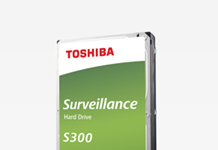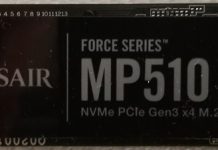|
|
Review: Toshiba AL14SXB90EN Reviewed by: J.Reynolds Provided by: Toshiba Firmware version: 0101 |
Introduction
Welcome to Myce’s review of the Toshiba AL14SXB90EN 900GB
SAS 2 Enterprise HDD (hereafter referred to as the AL14SXB).
I have reviewed one of Toshiba’s 15,000 RPM, 2.5inch form
factor, HDDs before, the Toshiba AL13SXB600N, which used a SAS 2 6Gbit/s
interface (you can see this review by clicking here).
The new AL14SXB90EN uses a SAS 3, 12 Gbit/s interface so it’s going to be
interesting to see how they compare – please read on to learn what we find.
Market Positioning and Specification
Market Positioning
This is how Toshiba positions the AL14SXB series of HDDs –

Specification
Here is Toshiba’s specification for the AL14SXB series –


Product Image
Here are some pictures of the AL14SXB90EN I tested –


As is typical for Toshiba drives it is solid and well built.
SAS
Here’s a quick recap of the advantages offered by the SAS
Standard.SAS utilises the Small Computer Systems Interface (‘SCSI’), which is a
set of standards including a functionally rich and proven command set, for the
physical connection and transfer of data between computers.
There are three types of SAS devices:
1. Initiators
Initiators include Host Bus Adapters (‘HBAs’) and Controllers.
They are the point at which an IO operation is initiated and sent to a Target
Device. Initiators are located in Host Computers/Servers. An initiator allows
the attachment of one or more Target Devices and Expanders to form an ‘SAS
Domain’
2. Target Devices
Target Devices include SAS devices, such as SAS HDDs, SAS
SSDs, and SAS Tape Drives. An SATA HDD or SSD can also be attached as a Target
Device.
3. Expanders
Expanders are low cost, high speed switches, which allow the
number of target devices attached to an SAS Domain to be increased.
It is worth noting that an SATA drive can be attached as a
Target in an SAS domain; however, an SAS device cannot be attached to an SATA
controller. SAS and SATA Target Device connectors are physically very similar,
but a ridge between the data and power connectors stops an SAS target connector
being plugged into an SATA device.
Target Devices are attached to initiators through one or
more SAS links. At the initiator, SAS links are typically arranged into groups
of 4 (or 8), known as a wide port. Mini SAS 4 Link Cable Connectors are
typically used to connect internal (‘in the host’) initiators to external
(‘outside the host’) physical storage device containers/racks.
All SAS based storage drives have at least two ports, whilst
SATA based devices only have one. SATA is a point to point solution and a
device may only be attached to one port on an SATA controller or one SAS link
in an SAS topology.
SAS supports ‘active cables’, which are thin cables with
active circuitry to reduce cable weight and increase signal voltages. This
allows SAS cable lengths to be up to 10m long, whereas SATA cable lengths are
limited to 1m. Cable length is an important consideration when designing the
physical implementation of an SAS multi-domain, high availability, topology.
SAS Target Devices can therefore be attached to more than
one SAS domain (and therefore more than one Host), so that if one Domain
(Host/Controller/HBA) fails it can still be accessed through another; this
ability to design in fail safe measures is considered to be a significant
advantage in Enterprise systems.
So, for example, an SAS based implementation could look like
this, where the dual port capability of SAS drives is used to provide a high
degree of protection against the failure of an initiator and/or it’s Host –

In this configuration an access path to each of the SAS SSD
Target Devices can survive a failure of one of the Hosts/Servers, one of the
Initiators/HBAs, one of the Expanders, one of the 4x wide port connector cables
between Host and Expander, or indeed one of the individual SAS Links between
Expander and Target Device.
The SAS standard continues to evolve and we can expect to
see SAS 4 (24 Gbit/s) products arrive by 2019.
Now let's head to the next page, to look at the Performance
Tests conducted in this review.....

















